- Home
- Gary Paulsen
Caught by the Sea Page 3
Caught by the Sea Read online
Page 3
People get in trouble this way and often die through ignorance and foolishness. Over the years that I’ve been sailing, I have seen dozens of people killed because they did the wrong thing at the wrong time. But ignorance is also bliss, and in the truest sense of the word I was ignorant of my impending doom and living in what could only be termed a kind of bliss.
God, how I had missed the sea! The smell of it, the feel and sound of it took me now, and as the unheeded swells grew larger I rolled around half the day and explored the boat—an act that saved my life.
Though the boat rocked a great deal in the wind and waves, I finally figured out how to put the foresail up. It was hanked on, and for some reason I had difficulty figuring out how it worked, so I put it on and took it off several times as we rolled wildly, with no wind to steady the boat in the swells, hanging on to the stay with one hand while I worked with the other. (I know it is a sailor’s cliché, but it was my first time to run into the concept: one hand for yourself, one for the ship.)
The centerboard was heavy, made of steel, and kept banging around in the partial keel that hung down, so I used the ratchet crank inside the boat, mounted to the end of the small table, and cranked the board up tightly into its housing. Another act that may have helped to save my life.
By now it was past noon and the swells were almost vicious. Without force of wind the boat would not steer or lie to, and she wound up lying almost perfectly sideways to the swells, which were six and eight feet high, with about seven seconds between them.
I looked to shore, more than twelve miles off, and thought maybe I should use the motor to head back. This came under the heading of far too little action far too late to do any good. The motor was a small five-horse that moved the boat at perhaps four knots in a harbor, an in-and-out-of-the-slip motor. It would do nothing against waves. And besides, there was enough gas to take the boat only six or seven miles in a dead calm. In waves we might even move backward.
And now, at last, came the wind.
A touch on my cheek, a small zephyr, enough to slat the sails, fill them, let them pull a bit and then flop again. I had both the main and the jib up by now and I remember being confident, almost cocky, and I thought that if it would only start to blow harder maybe I could learn how it worked when a sailboat sailed against the wind. This was utter folly—teasing fate by actually hoping for a hard wind.
The wind freshened still more and the sails flapped louder until I pushed the tiller over and they filled and the boat slid forward, suddenly alive, one, two, then three knots on the speedometer in the cockpit.
It’s happening, I thought. It’s all working—I’m sailing. I pulled on the main sheet, pointed the boat higher into the wind and actually found myself tacking back toward shore, against the wind. I let the jib sheet out and the speed decreased; I pulled it back in and it increased.
Astonishing, I thought. Could it all really be this easy, this simple?
I looked past the bow at the sea and saw small waves forming as the boat sailed forward into them, slamming into them, spray coming back into my face. Incredible, wonderful, amazing.
And then the first inkling: out there, far ahead of the bow, almost on the horizon, it seemed as if a knife were cutting off the tops of the waves. Clean, flat, almost surgical, shearing the tops away neatly, and I thought, there it is, the wind, the big wind—just as it seemed to skip the intervening miles between us and slammed into the boat.
I had been in overpowering situations before— I’d nearly frozen to death while hunting and had also watched a typhoon hit the Philippines—but I had never felt so completely at the mercy of natural forces.
The boat slammed, tore, ripped sideways across the water. She was knocked flat. Without instrumentation I had no way of knowing the speed but I suspect that the beginning of the blow was more than sixty knots.
It was extraordinary that the sails didn’t blow out and shred. At the time the idea of Dacron sails was new (many boats still used cotton), and my Dacron sails were oversewn and overbuilt and incredibly strong.
Actually, the fact that they didn’t shred added to my peril. The sails filled from the beam and drove the boat over on her side and then kept her there. I went from sitting idly in the cockpit, day-dreaming about stronger wind, to hanging on to a winch, looking across the cockpit straight down into the water.
The waves immediately increased and became four feet of crosswave on top of the rolling swells, which were already eight or ten feet. The boat lay on her side, held down by the sails, covered by waves that threatened to sweep me out of the cockpit, and I hadn’t a clue as to what to do to save myself; at any second I expected her to capsize and roll and fill and sink. I knew I would drown, for it was impossible to swim in such waves even with a life jacket on, and I didn’t have a life jacket. I thought, How could this be? How could you die just a few miles out on a sunny day while people are sitting right over there in their homes watching the pretty sailboat sink?
The boat slid down a large wave, hesitated in the trough, seemed to shudder, then, still on her side (in a condition known as blowdown) floated to the top of the next wave, which covered me with water. She stayed there only a moment, then slid sickeningly down sideways into the next trough, shuddered, then repeated the cycle.
What was saving the boat, and almost incidentally me, was the fact that in my ignorance I had cranked the centerboard up into its housing. Had it still been down in the fully extended position, it would probably have caught and “tripped” the boat and almost certainly resulted in a capsizing. The boat would have filled and I would have drowned.
As it was, she was in a state of “lying a-hull,” just leaving a boat to find her own way through a problem—a survival procedure I used in ignorance and would come to detest and never use again with any boat. I was in great peril because the sails were still up. The normal procedure for lying a-hull is to douse all sails and tie them down with gaskets, batten all hatches and go below.
I was well past any decent part of my learning curve and simply hung in the cockpit, looking down in horror and a kind of numbness at the slate blue water roiling by beneath me. I thought suddenly of when I had crossed the Pacific, this same ocean, on that troopship when I was seven years old and how peaceful it had been, how blue and soft and inviting, the waves small and gentle.
I saw blood in the cockpit, smearing down the wet fiberglass, and wiped my face to find I had slammed into something and had a cut on my forehead and a first-class nosebleed. I hadn’t felt a thing and couldn’t feel it now.
A larger wave hit me like a bus. There are some waves that dwarf others when their movement becomes synchronized and they come together to form a much larger one. In large seas such swells are known as rogue waves and can be truly devastating, reaching heights of thirty or even sixty feet. In World War II such a wave hit an aircraft carrier in the Atlantic and peeled the flight deck back like the top of a sardine can.
This wave was perhaps two times the height of the usual waves hitting me, about eighteen or twenty feet.
I had time for one word—it may have been a prayer; I hope it was—and I was under water.
Somehow the wave did not pour down into the companionway and fill the boat. That would have sunk us.
But I saw the deep green light through the water pouring over me and it jarred me out of my panic-induced stupor.
Another such wave could easily be the end of us. I had to do something, fix something, save the boat, save myself.
But what? What did the professionals do when this happened?
All right, I thought. What is the trouble? What is causing my difficulties?
The waves.
The waves were too big.
Fine, I thought. I know a thing, I know this. The waves are too big.
Of course there was nothing I could do to make them smaller.
What else?
The wind—it was too strong. It was blowing the boat over, so I was being driven even further by the
waves that were too big. And as with the waves, I could do nothing to reduce the wind.
What else?
I couldn’t change the wind but perhaps I could reduce the effect of the wind on the boat.
I could—a revelation—reduce the area of the sail. I could pull down the sails. I could reef.
When I looked at the mainsail, lying almost horizontal to the sea, there seemed no way to make it come down. Then I saw the gearing where the boom joined the mast, truly noticed it for the first time; the boat had what was called worm-gear roller reefing, which meant I had to somehow stand up by the mast and lower the sail rope (halyard) with one hand, while slowly working a crank that rotated the boom with the other hand, while clinging to the boat with my teeth and rolling the mainsail up on the boom the way a window shade is raised. It is a system designed by a maniac advised by a madman who apparently never considered reefing a boat anywhere but tied up at the dock, and I wished fervently he was there at that moment.
I looked at the front of the boat. It was almost constantly under water, thick spray followed by the tops of waves, green water.
I must go up there, I thought, and hang on and crank and let the sails down.
It isn’t going to happen.
The thoughts came together. I must do it. It can’t be done. I must do it. It can’t be done.
It was my first real exposure to the fundamental truth of nature, the overriding law that governs all: man proposes; nature, in all her strength and glory, disposes.
The wind and waves did not care about me, did not care about the boat; we could live, we could die. It didn’t matter to nature, no more than when nature finds other ways—disease, avalanche, fire or just falling rocks—to kill you.
I was playing in nature’s playground perhaps for the first true time in my life, and there were no rules. I could get lucky, I could get unlucky.
So, scared as I was, exposed as I was, alone as I was, whether I did it out of bravery or fear, whether I got lucky or didn’t, I had no choice. If I didn’t go up there and lower the sails I would surely get creamed by the next extreme wave, or the one after that.
I had to go.
And yet . . .
And yet . . .
What with exploding missiles in the army, the Iditarod dog race in Alaska, some rough horses and close calls on motorcycles, I’ve been exposed to plenty of danger. Sometimes I’ve done it voluntarily and sometimes I’ve been forced into it, but to this day I have never been as reluctant to do a thing as I was to go out and lower the sails on the small foredeck of that little boat lying sideways on the water.
I would later hear men die on the sea, would hear them on the radio when no help could get to them and they knew it was the end, would hear in every word they said, the resignation in their voices, the last and basic and true understanding of what was coming, and I felt that way this time. It just did not look possible.
And yet . . .
There were ropes hanging about everywhere: loose sheets, ends of dock lines I had not stowed properly, scraps knocked out of seat lockers by the wild motion. I found one about thirty feet long and I made a loop under my armpits and then tied the other end to a sheet cleat in the cockpit. It left me enough slack to get up to the mast and, I hoped, would give me something to grab and pull myself back with if I went over the side. All of this was wrong. I know now that I should have had a jack-line—safety line—rigged and should have had a good safety harness and should not have gone to sea without them. If I went over the side with a thirty-foot rope around my waist, my chances of pulling myself back to the boat in that wind and sea were virtually zero. Climbing back in could cripple me even before I drowned.
With the decision to try and do something, my brain had started to work again, to a limited degree, and I looked at the sails, both of them almost lying in the water on the port side, and I realized I would not only have to lower them but do something with them after they were lowered.
Tie them up.
The main had been tied to the boom with small webbing gaskets, and I had thrown them down inside on the port bench when I pulled the main up. I looked down inside the tiny cabin. Everything that hadn’t been tied down was upside down and had crashed into the downward side of the boat in a pile, and several dollops of waves had gone in and turned it all into a sodden mass. It was my first exposure to the number one law of the sea: If given a chance a container of oatmeal will open, mix with an open container of coffee grounds, further combine itself with eight or ten gallons of seawater and then find its way into your sleeping bag. The same law states that all silverware will fall out of all drawers or containers and you will only find half of it, no matter how long you have the boat or how hard you look for it. (This is not to be confused with the second law of the sea, which says that the head will always plug itself at the most disgusting time and do so with the most disgusting object possible.)
I had to find something to use for restraining the sails, so I pulled myself into the cabin opening and reached into the mess and started throwing things around and had not been at it long when I saw the end of one of the yellow gaskets. When I pulled at it the other two came up with it and I untangled them and looped them around my neck (note: I could easily have hanged myself).
Back in the cockpit I looked at the sails. Together they were too much, I thought. One at a time. One at a time.
I had the gaskets to tie the mainsail down; we would do that one first.
I looked forward once more, and as I did the boat took a downward lurch and a wave swept across her bow, part of it actually going over the top of the mainsail as it lay in the water, dragging it further down.
But she righted herself and as she did I noticed there was a time, a few moments, when she swung up past the horizontal and actually brought the sail slightly up into the air. It did not last long, and she was nowhere near upright, but there was a lessening to her sideways look, and I waited for the next such motion, half a minute, and when it came I scuttled crablike, hanging on with hands and feet and, it seemed, with teeth as well, as the boat slammed up and down in the waves, torn by the wind.
After three attempts I finally clawed the main halyard loose from the cleat that held it and unfastened it. Had I expected the main to come down by itself, as it did in calmer weather in the harbor, I would have been sadly disappointed. It did not drop at all and I knew I would have to drag it down. By this time the boat had gone virtually horizontal again and I was lying facedown on top of the mast looking into the water.
I waited for the next roll and when it came I reached over my head and dragged at the main where the slides met the mast track and pulled three or four feet of sail to me, then waited for the next roll, and when we came up again I pulled another hunk of sail and kept this up until I saw the top of it four feet over my head.
I did not have lazy jacks (a kind of rope-cradling system to catch the sail when it comes down) and consequently the sail flopped out to the side in the water and seemed as if it would drag the boat under when it filled. But luckily the wind load was gone, and though the loose sail in the water looked terrible, much of the pressure had been reduced and the boat came up closer to an even keel.
I do not mean to give the impression that there was any semblance of order. The boat was still out of control, pitching wildly, slamming its bow under the waves. The mainsail lay over in the water, lines went everywhere (the tail of the main halyard had gotten away from me and was tangled in the spreaders), the jib was still full and dragging the boat around, which was not, as books on sailing would have it, “. . . rounding handily up into the wind.” No, the boat pitched and tossed because one of the loose lines or sheets had fouled the tiller handle over to the side, which kept the bow well off the wind and the foresail filled.
I was hanging on to the mast with one hand, the gaskets around my neck, trying to snag the sail and get it out of the water, when the boom decided to kill me.
The main sheet had, of course, long been lost t
o me, so it was not controlling the boom. With the sail collapsed in the water there was no tension at all on the boom and it started to sweep back and forth, clearing the deck. I was at the mast, out of the way, but to catch the sail I would have to move out away from the mast where the boom could get me, and as soon as I moved it caught me in the middle of the chest and swept me off the boat. I hung on and when it came back I got my feet back on the boat and dragged at the mainsail again, timing my effort to avoid the sweeping boom until at last I had a big enough chunk of the main to tie up with a gasket. It was probably only four or five minutes of intense, painful, impossibly wet effort, but it seemed like a lifetime. This pulled much of the rest of the main out of the water and the next large area came up a bit easier; I tied it off and then I attacked the jib.
It was a thing possessed. It would fill with a slamming explosion, then slap empty, then refill, and I undid the halyard without really knowing what to expect. I was amazed to see it drop a bit between fill-slams. The piece of rope I had put around my waist was not long enough to allow me to get up to the jib so I found another loose sheet, tied it around my waist and to the mast, untied the first piece of rope, and on my hands and knees crawled out on the tiny foredeck to find that the jib came down surprisingly easily. I wadded it into a bundle and used my remaining gasket to tie it all to the side of the little bow pulpit.
I crawled back to the mast, untied the second sheet from my waist, retied the first line from the cockpit and crawled back to the cockpit.
Everything was still on the edge of disaster. Yet the boat, while slamming mightily, had found a way to heave to with the wind pushing her bow while the still-fouled tiller held her off (a good foul-weather maneuver, though I hadn’t known what it was called or how it was done). I could tell that the boat had settled into a mode that somehow took care of her and kept her at least partially sensible, so I decided the best thing I could do was go below and try to straighten her up a bit and get some rest.

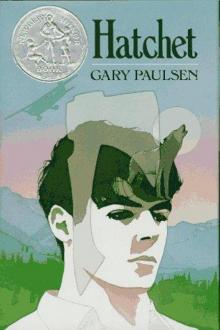 Hatchet br-1
Hatchet br-1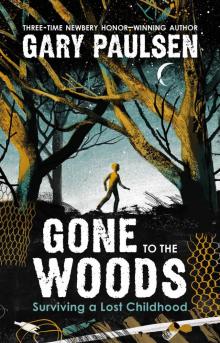 Gone to the Woods
Gone to the Woods How to Train Your Dad
How to Train Your Dad The Haymeadow
The Haymeadow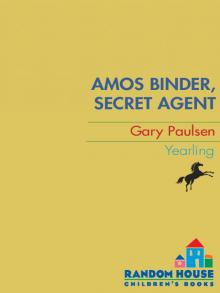 Amos Binder, Secret Agent
Amos Binder, Secret Agent The River br-2
The River br-2 Amos Gets Married
Amos Gets Married Father Water, Mother Woods
Father Water, Mother Woods Dunc and the Scam Artists
Dunc and the Scam Artists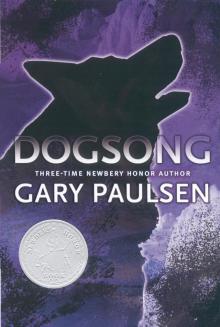 Dogsong
Dogsong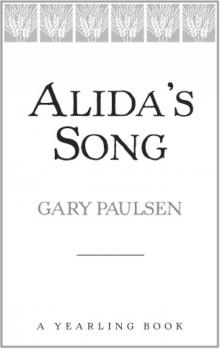 Alida's Song
Alida's Song The Wild Culpepper Cruise
The Wild Culpepper Cruise Brian's Hunt
Brian's Hunt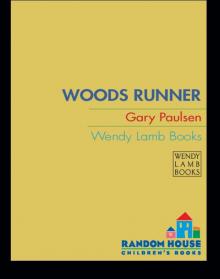 Woods Runner
Woods Runner Dunc and Amos on Thin Ice
Dunc and Amos on Thin Ice The Treasure of El Patron
The Treasure of El Patron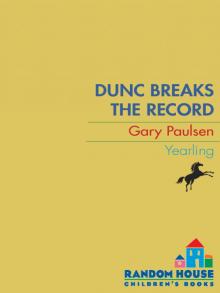 Dunc Breaks the Record
Dunc Breaks the Record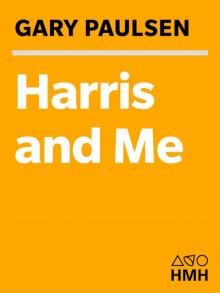 Harris and Me
Harris and Me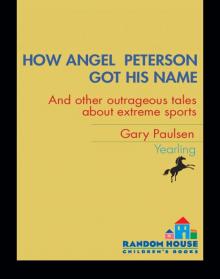 How Angel Peterson Got His Name
How Angel Peterson Got His Name My Life in Dog Years
My Life in Dog Years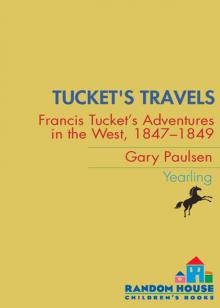 Tucket's Travels
Tucket's Travels Canyons
Canyons Dunc and the Flaming Ghost
Dunc and the Flaming Ghost The Schernoff Discoveries
The Schernoff Discoveries The Winter Room
The Winter Room Road Trip
Road Trip Masters of Disaster
Masters of Disaster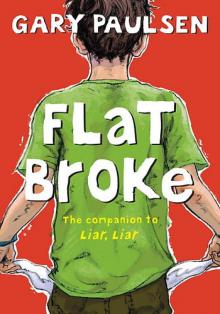 Flat Broke
Flat Broke Dunc and Amos Hit the Big Top
Dunc and Amos Hit the Big Top Time Benders
Time Benders Caught by the Sea
Caught by the Sea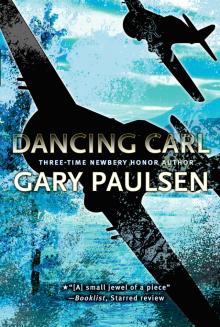 Dancing Carl
Dancing Carl The Seventh Crystal
The Seventh Crystal The Boy Who Owned the School
The Boy Who Owned the School Six Kids and a Stuffed Cat
Six Kids and a Stuffed Cat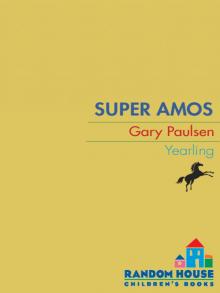 Super Amos
Super Amos Dunc and the Greased Sticks of Doom
Dunc and the Greased Sticks of Doom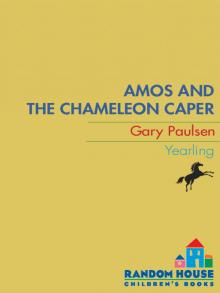 Amos and the Chameleon Caper
Amos and the Chameleon Caper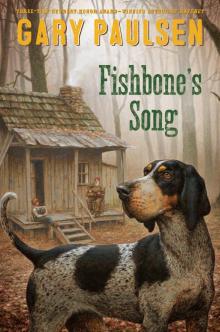 Fishbone's Song
Fishbone's Song Curse of the Ruins
Curse of the Ruins Brian's Return br-4
Brian's Return br-4 Molly McGinty Has a Really Good Day
Molly McGinty Has a Really Good Day Captive!
Captive! Culpepper's Cannon
Culpepper's Cannon The Car
The Car Puppies, Dogs, and Blue Northers
Puppies, Dogs, and Blue Northers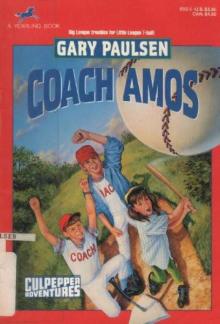 Coach Amos
Coach Amos Mudshark
Mudshark The White Fox Chronicles
The White Fox Chronicles Dunc and Amos Meet the Slasher
Dunc and Amos Meet the Slasher Field Trip
Field Trip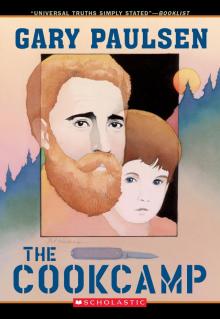 The Cookcamp
The Cookcamp Crush
Crush Lawn Boy Returns
Lawn Boy Returns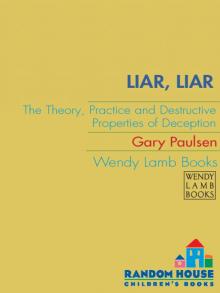 Liar, Liar k-1
Liar, Liar k-1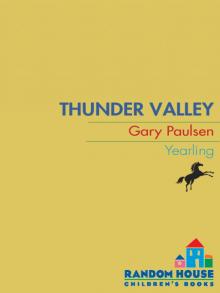 Thunder Valley
Thunder Valley The Tent
The Tent The Beet Fields
The Beet Fields The Creature of Black Water Lake
The Creature of Black Water Lake Rodomonte's Revenge
Rodomonte's Revenge Guts
Guts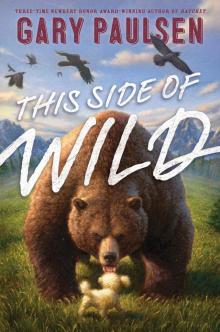 This Side of Wild
This Side of Wild The Rifle
The Rifle The Time Hackers
The Time Hackers Amos Goes Bananas
Amos Goes Bananas The Amazing Life of Birds
The Amazing Life of Birds Dunc's Undercover Christmas
Dunc's Undercover Christmas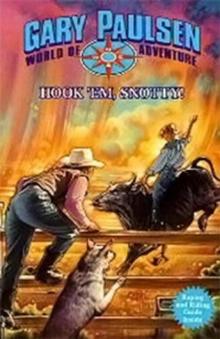 Hook 'Em Snotty
Hook 'Em Snotty Amos and the Vampire
Amos and the Vampire Danger on Midnight River
Danger on Midnight River Grizzly
Grizzly The Legend of Red Horse Cavern
The Legend of Red Horse Cavern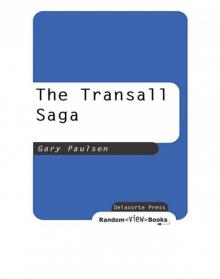 The Transall Saga
The Transall Saga Lawn Boy
Lawn Boy The Case of Dunc's Doll
The Case of Dunc's Doll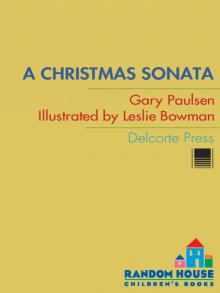 A Christmas Sonata
A Christmas Sonata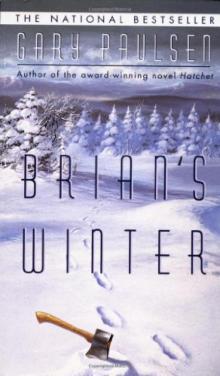 Brian's Winter br-3
Brian's Winter br-3 Vote
Vote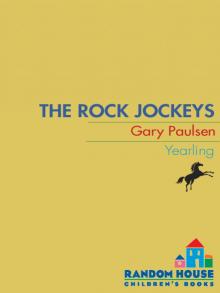 The Rock Jockeys
The Rock Jockeys Nightjohn
Nightjohn Escape from Fire Mountain
Escape from Fire Mountain The Case of the Dirty Bird
The Case of the Dirty Bird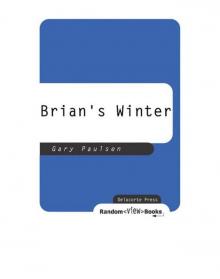 Brian's Winter
Brian's Winter Amos's Killer Concert Caper
Amos's Killer Concert Caper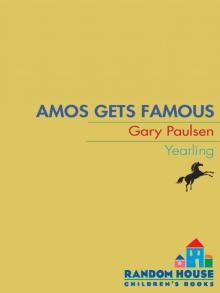 Amos Gets Famous
Amos Gets Famous Brian's Return
Brian's Return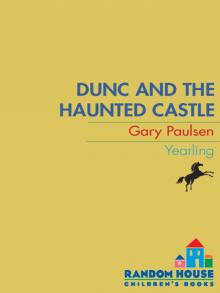 Dunc and the Haunted Castle
Dunc and the Haunted Castle The Monument
The Monument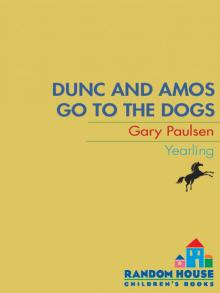 Dunc and Amos Go to the Dogs
Dunc and Amos Go to the Dogs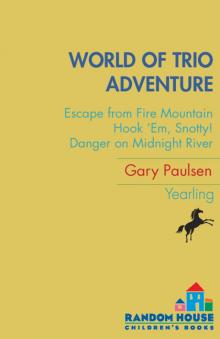 World of Adventure Trio
World of Adventure Trio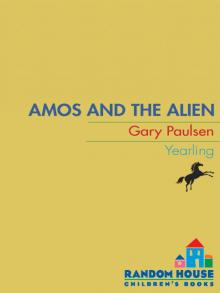 Amos and the Alien
Amos and the Alien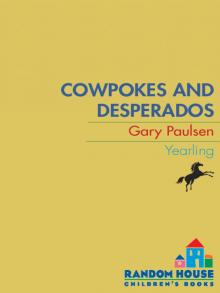 Cowpokes and Desperadoes
Cowpokes and Desperadoes Dunc and Amos and the Red Tattoos
Dunc and Amos and the Red Tattoos Dunc's Dump
Dunc's Dump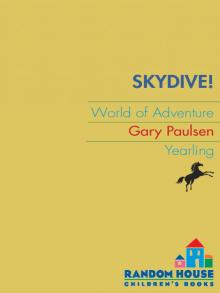 Skydive
Skydive Prince Amos
Prince Amos The Gorgon Slayer
The Gorgon Slayer Dunc's Halloween
Dunc's Halloween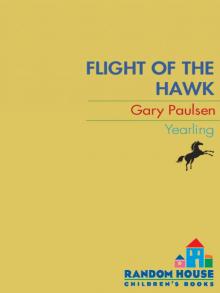 Flight of the Hawk
Flight of the Hawk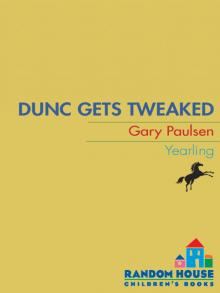 Dunc Gets Tweaked
Dunc Gets Tweaked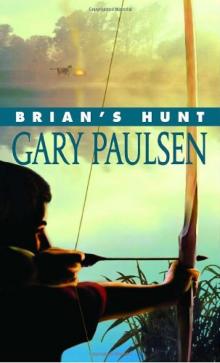 Brian's Hunt br-5
Brian's Hunt br-5 The Night the White Deer Died
The Night the White Deer Died